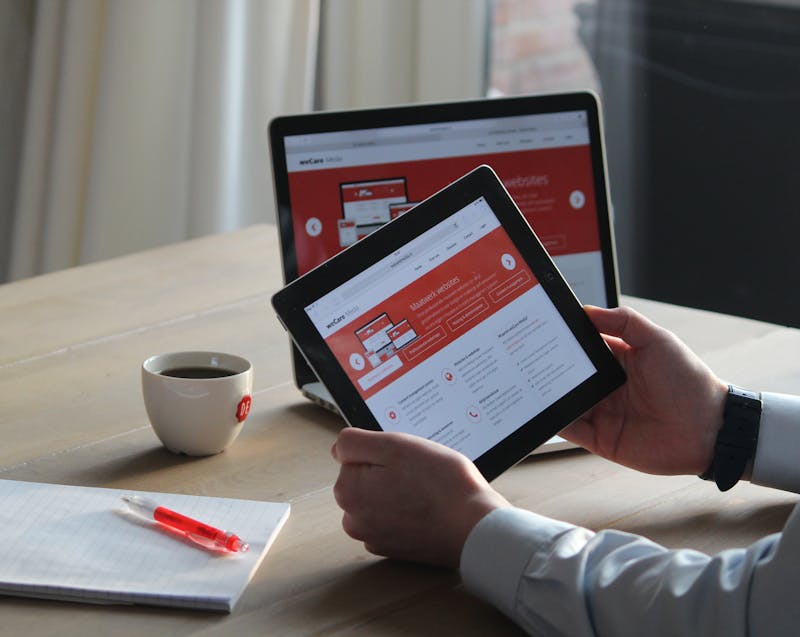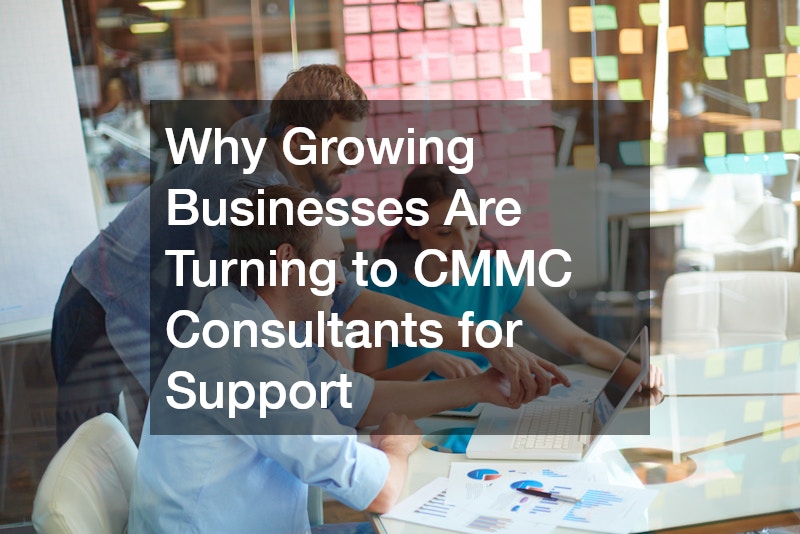In the fast-paced digital marketplace of 2025, your corporate website is more than an online business card — it’s your 24/7 sales representative, brand ambassador, and customer service hub all rolled into one. For business owners, having a well-designed, functional, and user-friendly corporate website is no longer optional; it’s a necessity to remain competitive and credible.
The landscape of corporate website design is evolving rapidly, driven by emerging technologies, changes in user behavior, and rising expectations for performance and accessibility. This guide explores the best practices for corporate website design in 2025, offering actionable insights to help you create a site that not only attracts visitors but also converts them into loyal clients.
Why Your Corporate Website Matters More Than Ever in 2025
Your corporate website is often the first point of contact for potential clients, partners, and investors. First impressions count — and in today’s digital-first world, users expect websites to load quickly, look professional, and provide the information they need without frustration.
A well-executed corporate website:
- Reinforces your brand credibility and authority
- Communicates your value proposition clearly
- Drives lead generation and customer engagement
- Builds trust through transparency and ease of navigation
In 2025, corporate website design is about more than aesthetics. It’s about integrating strategic design choices with performance optimization, accessibility compliance, and emerging technology to ensure your site stays ahead of competitors.
Understanding the Core Elements of Effective Corporate Website Design

Before diving into trends and advanced features, it’s important to understand the foundational elements that make up an effective corporate website. These essentials form the backbone of your design and should be in place before exploring more innovative additions.
The main components include:
- Clear Navigation: A logical menu structure helps visitors find what they’re looking for quickly.
- Brand Consistency: Cohesive use of colors, fonts, and imagery reinforces brand identity.
- Mobile Responsiveness: With mobile traffic dominating, a mobile-first approach is critical.
- Fast Load Speeds: Users abandon slow-loading sites, and search engines penalize them.
- High-Quality Content: Relevant, engaging copy that addresses audience needs.
- Strong Calls-to-Action (CTAs): Guide visitors toward desired actions, such as contacting you or requesting a quote.
Without these building blocks, even the most visually striking site will struggle to perform effectively.
Website Essentials: Corporate Website Design Best Practices for 2025
In 2025, best practices for corporate website design are shaped by user expectations, search engine algorithms, and evolving web technologies. As a business owner, you need to blend usability with innovation to create a competitive edge.
Here are the top design principles to keep in mind:
- Mobile-First and Cross-Device Compatibility
- Prioritize mobile usability during the design process, ensuring seamless experiences across all devices.
- Accessibility Compliance
- Follow WCAG 2.2 guidelines, including proper color contrast, keyboard navigation, and screen reader compatibility.
- High-Performance Architecture
- Implement lazy loading, optimized images, and caching to improve speed.
- Personalized User Experiences
- Use AI-driven personalization to tailor content and product recommendations to visitor preferences.
- Secure, Trustworthy Infrastructure
- Incorporate SSL certificates, two-factor authentication for admin access, and visible trust badges for e-commerce.
Following these best practices ensures your website not only meets user expectations but also positions your brand as forward-thinking and reliable.
How to Make Your Corporate Website Mobile-First
Mobile-first design is no longer an option — it’s the industry standard. With over 60% of global internet traffic coming from mobile devices, your corporate website must deliver an exceptional mobile experience.
A mobile-first approach means designing for smaller screens first and then scaling up for desktops. This ensures critical content and functionality remain accessible and usable across all devices. Key steps include:
- Prioritizing Content Hierarchy: Display the most important information upfront.
- Responsive Layouts: Use flexible grids and CSS media queries.
- Touch-Friendly Elements: Make buttons large enough for easy tapping.
- Fast Mobile Load Speeds: Compress images and minimize scripts.
By embracing mobile-first design, you’ll not only improve user satisfaction but also boost your search engine rankings, as Google’s mobile-first indexing gives priority to mobile-optimized websites.
Enhancing User Experience (UX) to Drive Conversions
A beautiful website is meaningless if it’s difficult to use. User experience (UX) design focuses on making your website intuitive, enjoyable, and efficient for visitors. In 2025, UX is a primary driver of both search engine visibility and conversion rates.
Strategies for improving UX include:
- Clear Visual Hierarchy: Use size, color, and spacing to guide attention.
- Simple Navigation Menus: Limit top-level menu items to 5–7 for clarity.
- Consistent Design Language: Ensure buttons, fonts, and colors align with brand guidelines.
- Interactive Elements: Add sliders, hover effects, and animations without overwhelming the user.
- Feedback Loops: Use form confirmations, progress indicators, and microinteractions to reassure users.
Well-executed UX keeps visitors engaged longer and leads them smoothly toward taking desired actions, whether that’s filling out a form or making a purchase.
Optimizing Your Website for Search Engines
Even the most well-designed website won’t perform if people can’t find it. Search engine optimization (SEO) ensures your site ranks highly in search results, attracting qualified traffic.
Key SEO strategies for corporate websites include:
- Keyword Research: Identify industry-specific keywords and integrate them naturally into headings, copy, and metadata.
- On-Page Optimization: Use descriptive title tags, meta descriptions, and alt text for images.
- Technical SEO: Improve site structure, implement schema markup, and ensure clean URL formatting.
- Content Marketing: Publish regular blog posts, case studies, and white papers to attract and engage audiences.
- Link-Building: Earn backlinks from credible industry sources.
By combining technical and content-driven SEO strategies, you can enhance your website’s visibility and authority in your niche.
Integrating Branding into Corporate Website Design
Your website is one of the most important brand touchpoints. Consistent, intentional branding builds trust and recognition, helping your business stand out in a crowded marketplace.
Brand integration tips:
- Logo Placement: Typically at the top left, linking back to the homepage.
- Color Palette: Stick to your brand’s primary and secondary colors.
- Typography: Use consistent fonts for headings, subheadings, and body text.
- Tone of Voice: Ensure written content matches your brand’s personality.
- Visual Imagery: Use custom photography or brand-appropriate stock images.
Strong branding transforms your website from a generic online presence into a memorable, persuasive representation of your business identity.
The Role of Security in Corporate Website Design
In 2025, cybersecurity is a design consideration from the ground up. A breach not only risks sensitive data but can severely damage your brand’s reputation.
Security best practices include:
- SSL Certificates: Encrypt data between the server and the user’s browser.
- Regular Updates: Keep CMS, plugins, and frameworks up to date.
- Data Protection Policies: Comply with GDPR, CCPA, and other regulations.
- Secure Hosting: Choose reputable providers with strong security measures.
- User Education: Provide guidance for secure password creation and phishing awareness.
Building trust through visible security measures is especially important for businesses handling client data or conducting transactions online.
Leveraging AI and Automation in Corporate Websites
Artificial intelligence is revolutionizing corporate website design, enabling smarter, more personalized user experiences.
AI-driven features to consider:
- Chatbots: Offer 24/7 customer service and instant responses.
- Personalized Content: Tailor product recommendations and articles based on user behavior.
- Predictive Analytics: Forecast user needs and preferences.
- Voice Search Optimization: Prepare for the rise of voice-enabled browsing.
By integrating AI, you can streamline operations, increase engagement, and offer a level of personalization that sets your business apart.
Measuring Website Success with Analytics
Designing your site is only the first step — monitoring its performance is key to ongoing success. Analytics provide data-driven insights into how visitors interact with your website, helping you make informed improvements.
Essential metrics to track:
- Traffic Sources: Understand where your visitors are coming from.
- Bounce Rate: Identify pages that fail to engage.
- Conversion Rate: Measure how many visitors take desired actions.
- Average Session Duration: Gauge content engagement.
- Page Load Times: Spot performance bottlenecks.
Using tools like Google Analytics 4, Hotjar, or Microsoft Clarity, you can continuously refine your site to improve performance and user satisfaction.
Future-Proofing Your Corporate Website for Emerging Technologies

As digital trends evolve, corporate websites must adapt to remain relevant and competitive. Future-proofing your site means building with flexibility in mind, ensuring you can integrate new tools and respond quickly to changes in technology and user expectations. In 2025 and beyond, emerging technologies will reshape how businesses interact with their audiences online. Business owners should consider:
- Scalable Architecture: Choose CMS platforms and hosting solutions that can grow with your business.
- Headless CMS: Enable faster, more flexible integration with mobile apps and other channels.
- Progressive Web Apps (PWAs): Provide app-like experiences directly through the browser.
- AR/VR Integration: Offer immersive product demos or virtual tours for enhanced engagement.
- API-First Design: Make it easier to connect your site with third-party tools and services.
By anticipating future needs and designing with adaptability in mind, your corporate website can continue to serve as a powerful business asset for years to come.
Conclusion: Building a Future-Ready Corporate Website
In 2025, a corporate website is more than a digital placeholder — it’s a strategic business tool. By combining best practices in corporate website design with emerging technologies and a strong focus on user experience, you can create a site that stands out, attracts the right audience, and drives measurable results.
Business owners who invest in thoughtful design, accessibility, security, and performance optimization will not only meet current expectations but also be well-positioned for future growth. The digital landscape will continue to evolve — and your corporate website should evolve with it.





